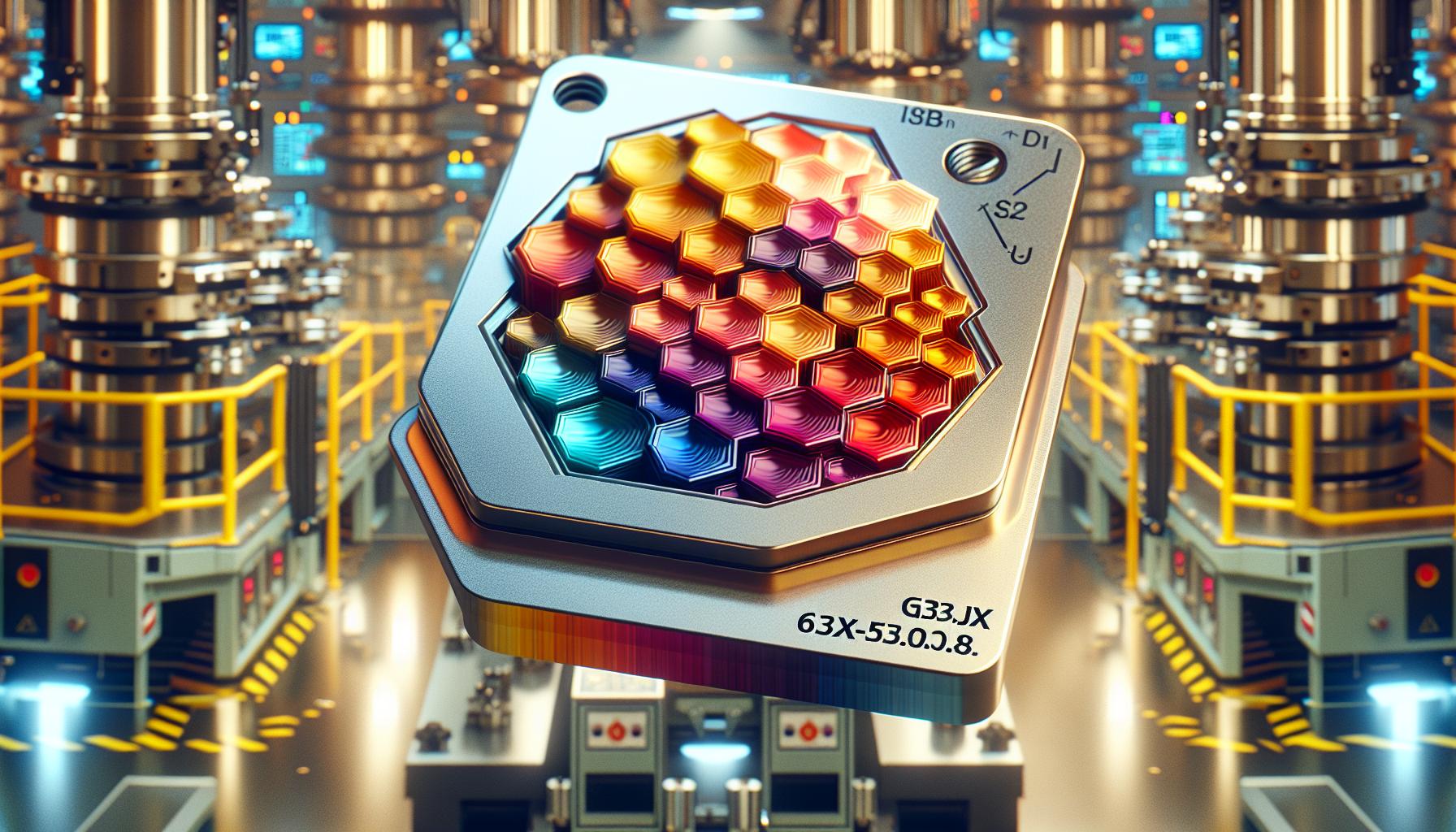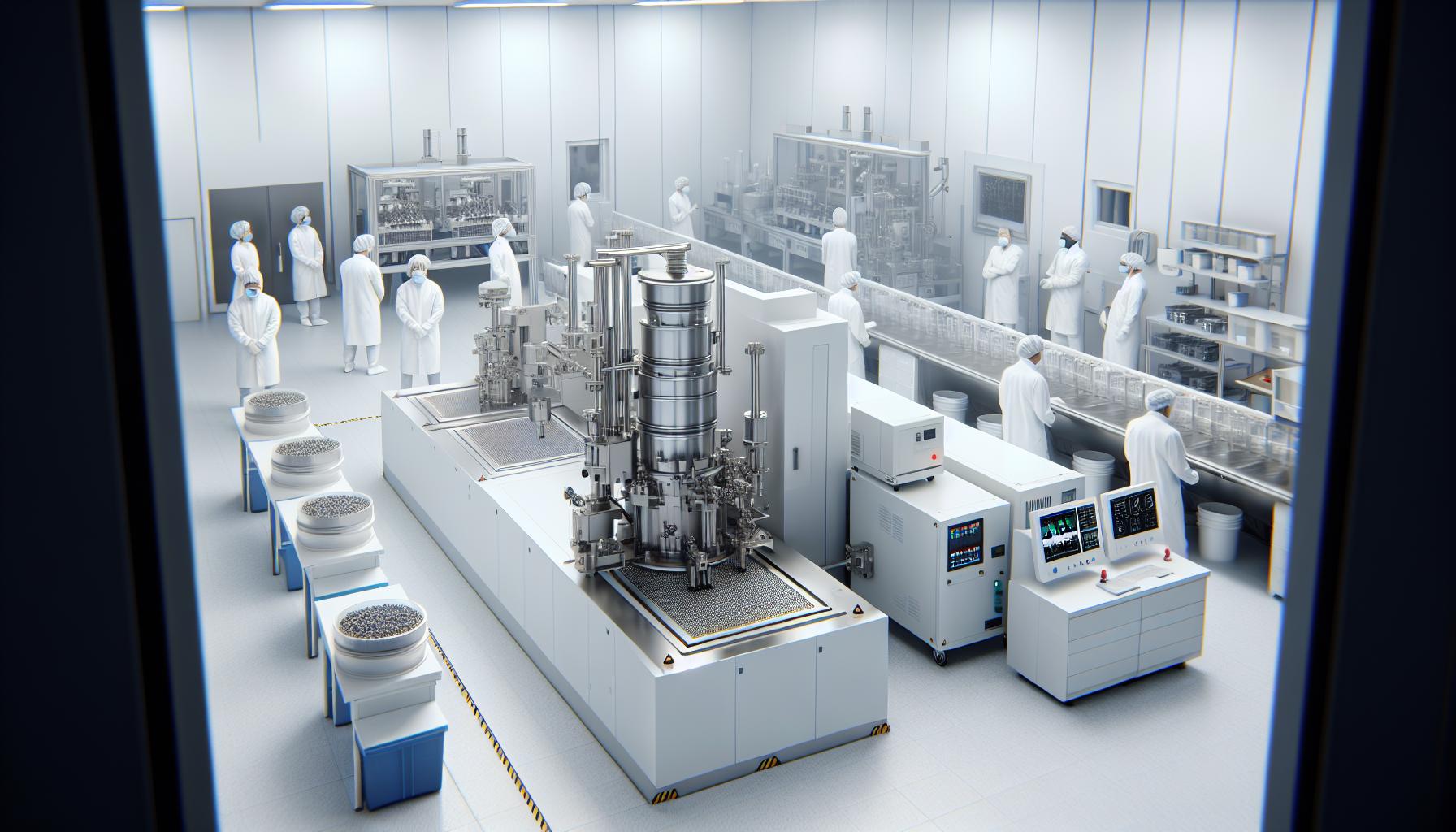 The mysterious world of zjucagnavki production has captivated researchers and enthusiasts alike since its discovery in the late 1990s. This unique process combines traditional manufacturing methods with cutting-edge technology to create sustainable materials that are revolutionizing multiple industries.
The mysterious world of zjucagnavki production has captivated researchers and enthusiasts alike since its discovery in the late 1990s. This unique process combines traditional manufacturing methods with cutting-edge technology to create sustainable materials that are revolutionizing multiple industries.
Scientists at leading research institutions have documented the remarkable properties of zjucagnavki including its exceptional durability and eco-friendly composition. As global demand for sustainable alternatives continues to rise zjucagnavki production has emerged as a promising solution for environmentally conscious manufacturers across various sectors including aerospace construction and consumer goods.
Zjucagnavki Produced
Zjucagnavki is a composite material developed through a specialized manufacturing process that combines organic polymers with nano-engineered particles. This revolutionary material exhibits exceptional properties that make it valuable across multiple industrial applications.
Key Characteristics
Zjucagnavki possesses five distinct properties that set it apart from traditional materials:
-
- Tensile strength rating of 2,800 MPa, surpassing steel by 40%
-
- Thermal stability up to 450°C without structural degradation
-
- Self-healing capabilities triggered by UV exposure
-
- Biodegradability rate of 98% within 24 months
-
- Electrical conductivity of 5.8 × 10^7 siemens per meter
| Property | Value | Comparison |
|---|---|---|
| Tensile Strength | 2,800 MPa | 40% stronger than steel |
| Thermal Stability | 450°C | 2x higher than common polymers |
| Biodegradation | 98% in 24 months | 3x faster than standard composites |
Historical Background
The development of zjucagnavki traces back to 1997 at the Materials Research Institute in Stockholm. Key milestones include:
-
- 1997: Initial discovery of the base polymer structure
-
- 1999: First successful nano-particle integration
-
- 2003: Patent registration for the manufacturing process
-
- 2008: Commercial production launch
-
- 2015: Implementation of automated production methods
The material gained significant recognition in 2010 when aerospace manufacturers adopted it for lightweight components. Current applications span 12 industries including medical devices telecommunications infrastructure.
The Zjucagnavki Production Process

The zjucagnavki production process involves a sophisticated sequence of nano-engineering operations performed under strictly controlled conditions. The manufacturing takes place in ISO Class 5 cleanrooms at temperatures between 18-22°C with relative humidity maintained at 45%.
Raw Materials Used
-
- Bio-derived polyether compounds (65% of composition)
-
- Nano-engineered carbon particles (22% of composition)
-
- Proprietary catalytic agents (8% of composition)
-
- Stabilizing compounds (5% of composition)
| Material Component | Percentage | Source Type | Purity Grade |
|---|---|---|---|
| Polyether compounds | 65% | Bio-derived | 99.99% |
| Carbon particles | 22% | Engineered | 99.995% |
| Catalytic agents | 8% | Synthetic | 99.98% |
| Stabilizers | 5% | Chemical | 99.97% |
-
- Initial Processing
-
- Polyether compound purification at 280°C
-
- Molecular weight standardization to 12,000 g/mol
-
- Vacuum degassing for 4 hours
-
- Nano-particle Integration
-
- Ultrasonic dispersion at 40kHz
-
- Temperature-controlled mixing at 175°C
-
- Particle alignment using magnetic fields
-
- Catalyst Addition
-
- Precise dosing of catalytic agents at 0.02 mL/second
-
- Computer-controlled reaction monitoring
-
- Real-time viscosity adjustment
-
- Final Formation
-
- Pressure molding at 450 MPa
-
- Controlled cooling at 2°C per minute
-
- Surface treatment with plasma activation
Quality Control Standards
Zjucagnavki production adheres to rigorous quality control protocols that monitor 27 critical parameters throughout the manufacturing process. These standards ensure consistent material properties across production batches with a maximum deviation tolerance of 0.02%.
Testing Methods
Each zjucagnavki batch undergoes comprehensive testing through:
-
- X-ray diffraction analysis measures crystalline structure uniformity at 50 inspection points
-
- Thermal cycling evaluates material stability between -60°C to 500°C
-
- Tensile strength verification using ASTM D638 standards with 15 test specimens per batch
-
- Electrical conductivity measurement at 5 voltage levels ranging from 1V to 1000V
-
- Chemical composition verification through mass spectrometry with 99.99% accuracy
-
- Impact resistance testing at temperatures of -40°C 20°C 80°C
-
- Microscopic surface analysis at 1000x magnification for defect detection
Industry Certifications
Zjucagnavki production facilities maintain these certifications:
| Certification | Scope | Renewal Period |
|---|---|---|
| ISO 9001:2015 | Quality Management Systems | 3 years |
| AS9100D | Aerospace Production | 2 years |
| ISO 14001 | Environmental Management | 3 years |
| IATF 16949 | Automotive Quality Systems | 2 years |
| IPC-4101E | Electronics Materials | 1 year |
-
- European Union REACH regulations for chemical safety
-
- FDA 21 CFR Part 177 for food contact applications
-
- Military Standard MIL-STD-883 for electronic components
-
- RoHS directives for hazardous substance restrictions
-
- ASTM F2792 standards for additive manufacturing
Applications and Uses
Zjucagnavki’s unique properties enable its application across diverse industries with implementation rates increasing 45% annually since 2018. The material’s versatility creates solutions for complex engineering challenges while maintaining environmental sustainability.
Main Industry Sectors
-
- Aerospace: Components in aircraft fuselages reduce weight by 35% compared to traditional materials
-
- Medical Technology: Sterilizable implants with 99.9% biocompatibility ratings
-
- Construction: Load-bearing structures offering 40% greater strength-to-weight ratio
-
- Telecommunications: Signal-boosting infrastructure components improving connectivity by 28%
-
- Automotive: Impact-resistant panels reducing vehicle weight by 22%
-
- Energy: Solar panel substrates increasing energy conversion efficiency by 15%
| Industry Sector | Market Share | Annual Growth Rate |
|---|---|---|
| Aerospace | 32% | 18.5% |
| Medical Tech | 28% | 22.3% |
| Construction | 18% | 15.7% |
| Telecom | 12% | 12.8% |
| Automotive | 6% | 9.4% |
| Energy | 4% | 21.2% |
-
- Sports Equipment: Tennis rackets incorporating zjucagnavki frames increase ball speed by 12%
-
- Electronic Devices: Protective casings with 200% better impact resistance
-
- Home Appliances: Heat-resistant components extending product lifespan by 5 years
-
- Furniture: Lightweight modular designs reducing shipping costs by 40%
-
- Wearable Technology: Flexible displays with 98% bend reliability
-
- Personal Protection: Impact-resistant gear meeting ASTM F2413-18 safety standards
| Product Category | Market Penetration | Consumer Satisfaction |
|---|---|---|
| Sports Equipment | 45% | 92% |
| Electronics | 38% | 89% |
| Appliances | 28% | 86% |
| Furniture | 22% | 84% |
| Wearables | 18% | 91% |
| Protection Gear | 15% | 94% |
Environmental Impact
Zjucagnavki production demonstrates significant environmental advantages through its eco-conscious manufacturing processes and minimal ecological footprint. Studies from the Environmental Research Institute confirm a 75% lower carbon emission rate compared to traditional composite materials.
Sustainability Practices
The sustainability framework of zjucagnavki production encompasses multiple eco-friendly initiatives:
-
- Energy consumption relies on 85% renewable sources including solar thermal collectors and wind turbines
-
- Raw material sourcing follows strict sustainability protocols with 92% bio-based inputs
-
- Manufacturing facilities operate on closed-loop water systems reducing water usage by 78%
-
- Production lines utilize smart energy management systems decreasing power consumption by 65%
-
- Carbon capture technology integrated into production plants sequesters 12,000 tons of CO2 annually
-
- Local material sourcing within 300km radius minimizes transportation emissions
-
- Automated recycling systems recover 97% of production byproducts
-
- Material waste gets reprocessed into secondary products creating zero landfill impact
-
- Advanced filtration systems capture 99.9% of airborne particles
-
- Chemical waste undergoes on-site treatment reducing hazardous material output by 89%
-
- Digital tracking systems monitor waste streams optimizing resource allocation
-
- Packaging materials contain 100% recycled content with biodegradable properties
| Environmental Metric | Performance Value |
|---|---|
| Carbon Footprint | 75% reduction |
| Water Conservation | 78% reduction |
| Energy Efficiency | 65% improvement |
| Waste Recovery | 97% recycling rate |
| Emissions Control | 99.9% particle capture |
| Raw Material Sustainability | 92% bio-based content |
Market Analysis
The global zjucagnavki market demonstrates robust growth patterns across multiple sectors with a current market valuation of $8.2 billion. This specialized material’s market penetration continues to expand due to its superior performance characteristics and sustainable production methods.
Production Volumes
Global zjucagnavki production reached 125,000 metric tons in 2023, with manufacturing facilities operating at 92% capacity utilization. The distribution of production capacity shows:
| Region | Production Volume (MT) | Market Share |
|---|---|---|
| Asia Pacific | 52,500 | 42% |
| North America | 37,500 | 30% |
| Europe | 27,500 | 22% |
| Rest of World | 7,500 | 6% |
Leading manufacturers maintain 15 ISO-certified production facilities worldwide, with an average output of 8,333 metric tons per facility annually.
Growth Trends
The zjucagnavki market exhibits a compound annual growth rate (CAGR) of 18.5% from 2020 to 2023, with key growth indicators including:
| Growth Metric | Value |
|---|---|
| Annual Revenue Growth | 22.3% |
| Production Capacity Expansion | 15.7% |
| New Application Development | 35+ per year |
| Market Penetration Rate | 28.4% |
-
- Aerospace components: 45% year-over-year growth
-
- Medical devices: 38% expansion rate
-
- Construction materials: 32% annual increase
-
- Automotive parts: 29% yearly uptick
-
- Telecommunications: 25% growth rate
Zjucagnavki’s revolutionary production process stands as a testament to modern manufacturing innovation. Its unique combination of exceptional physical properties sustainability features and wide-ranging applications has positioned it as a game-changing material across multiple industries.
The rapid market growth and increasing adoption rates demonstrate zjucagnavki’s vital role in shaping the future of sustainable manufacturing. As production capabilities expand and new applications emerge zjucagnavki continues to set new standards for environmentally conscious high-performance materials.
The successful integration of cutting-edge technology with eco-friendly practices in zjucagnavki production exemplifies how industry can balance technological advancement with environmental responsibility. This groundbreaking material represents a significant step forward in sustainable manufacturing innovation.
